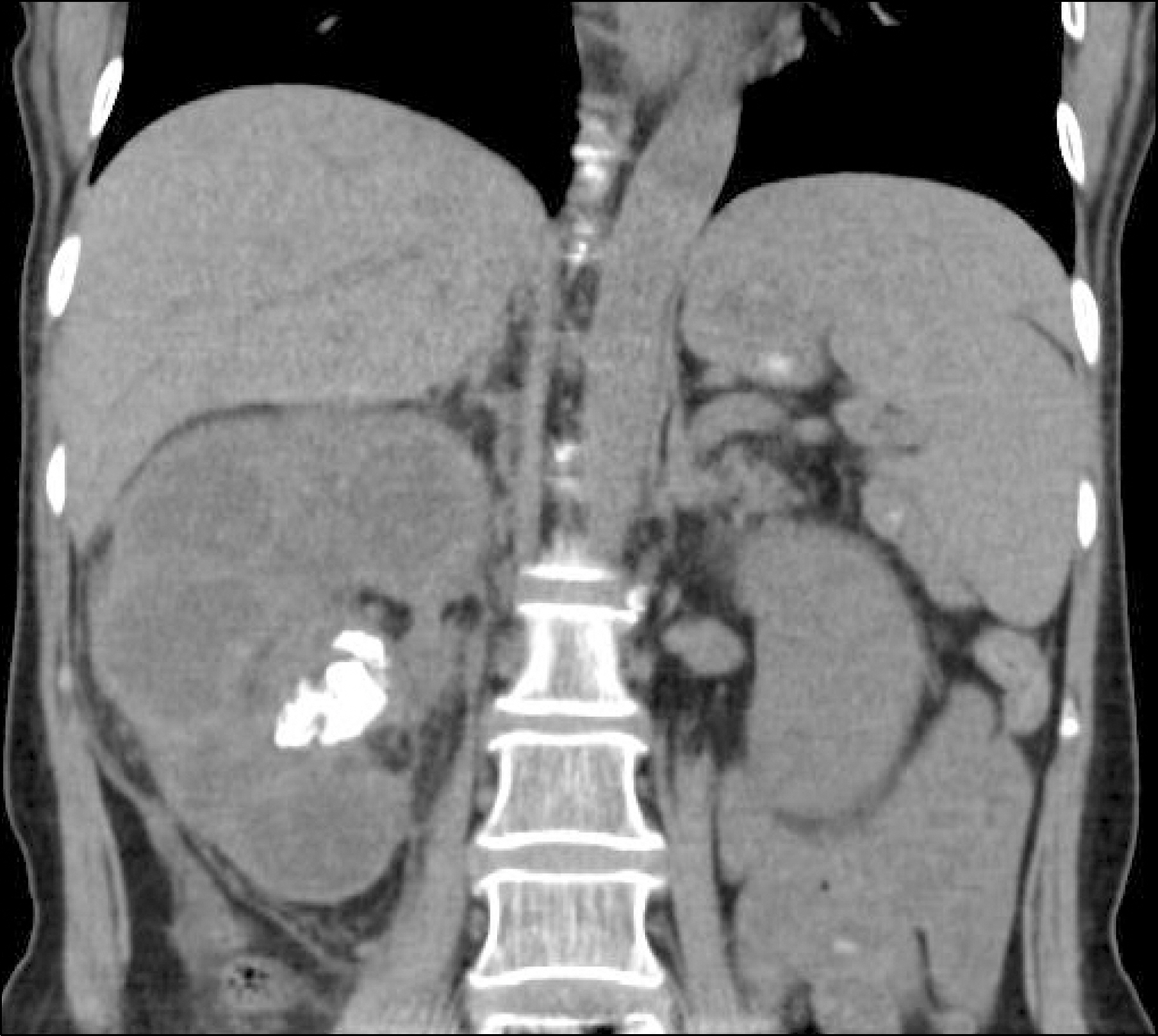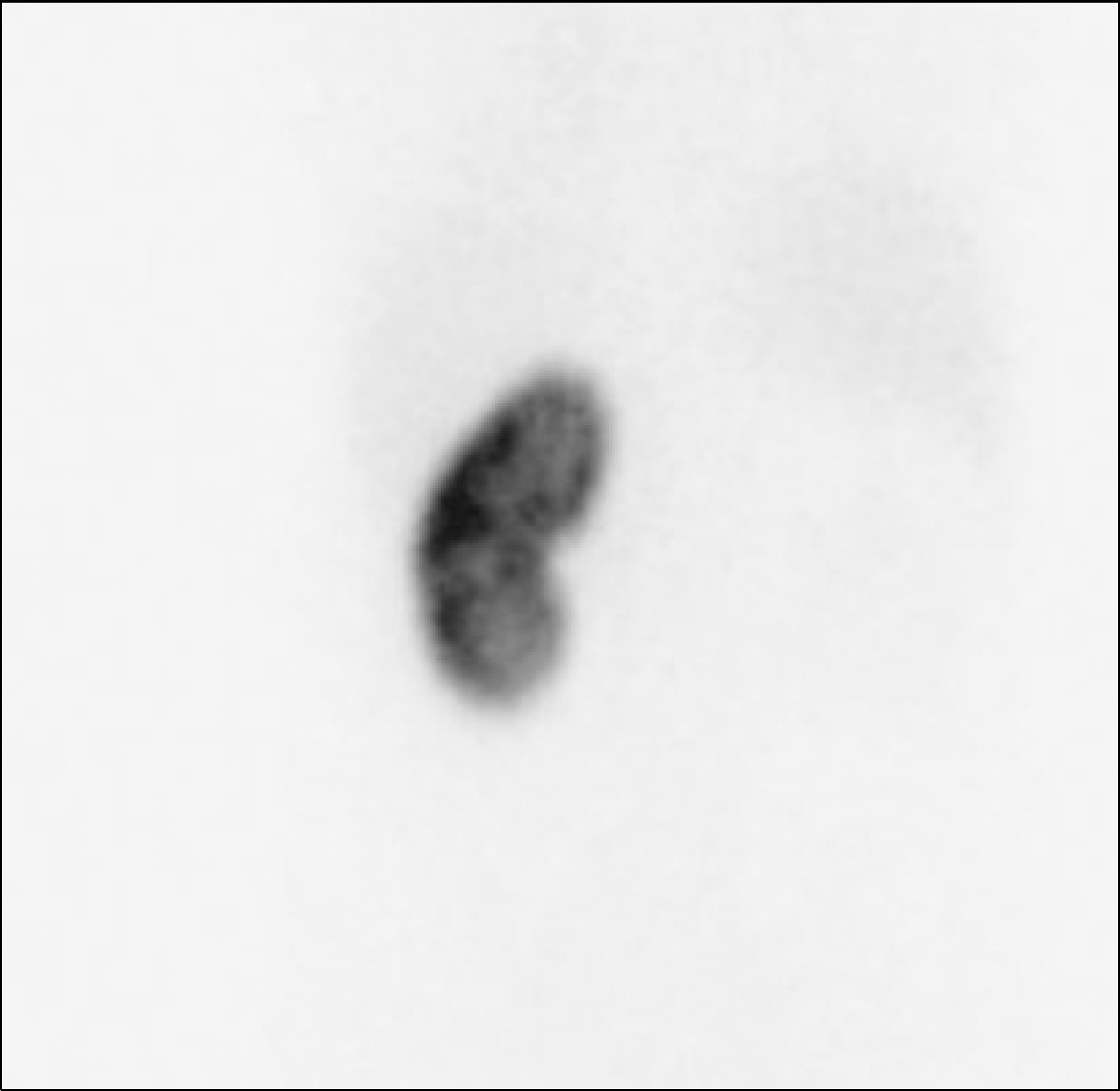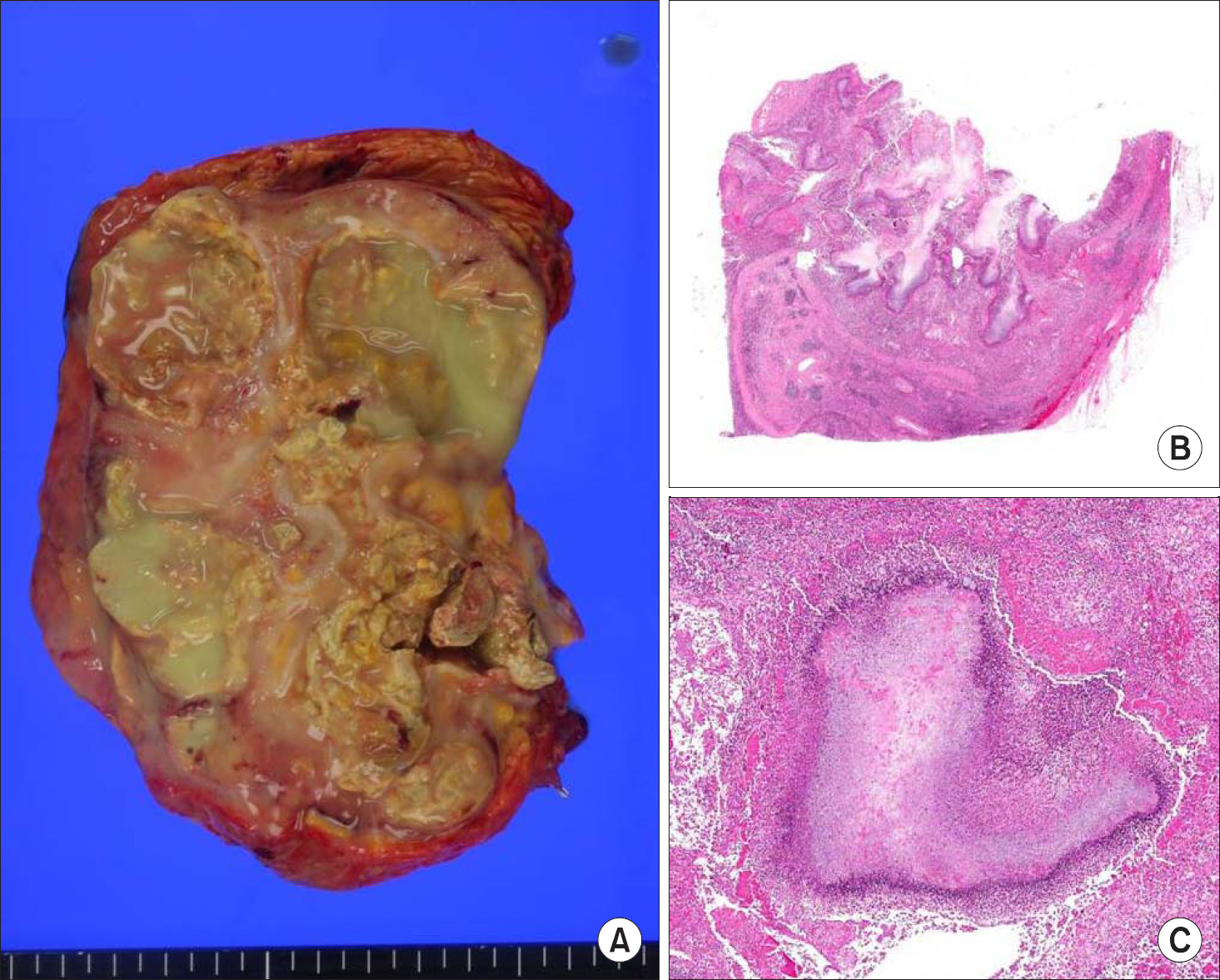Korean J Urogenit Tract Infect Inflamm.
2013 Apr;8(1):59-61. 10.14777/kjutii.2013.8.1.59.
Renal Actinomycosis Accompanying Staghorn Calculi
- Affiliations
-
- 1Department of Urology, College of Medicine, Dong-A University, Busan, Korea. urogate@dau.ac.kr
- 2Department of Pathology, College of Medicine, Dong-A University, Busan, Korea.
- KMID: 2289256
- DOI: http://doi.org/10.14777/kjutii.2013.8.1.59
Abstract
- Actinomycosis is a chronic infectious disease that is generally caused by Actinomyces israelii. Renal actinomycosis is a very rare disease, especially accompanying staghorn calculi formation. In this article, we present a case of renal actinomycosis with the staghorn calculi formation. A 52-year-old woman presented with a 3-month history of pain in the right upper quadrant. The abdominopelvic computed tomography scan showed staghorn calculi and severe dilatation of the pelvicalyceal system of the right kidney. A right simple nephrectomy and a partial resection of the infrahepatic inferior vena cava were performed. We anticipated that the final diagnosis would be xanthogranulomatous pyelonephritis, however histopathologic tests revealed renal actinomycosis with abscess formation and extensive inflammation, glomerulosclerosis and staghorn calculi.
Keyword
MeSH Terms
Figure
Reference
-
1. Khalaff H, Srigley JR, Klotz LH. Recognition of renal actinomycosis: nephrectomy can be avoided. Report of a case. Can J Surg. 1995; 38:77–9.2. Berchtenbreiter C, Bruning R, Auernhammer A, Reiser M. Misleading diagnosis of retroperitoneal actinomycosis. Eur Radiol. 1999; 9:1869–72.
Article3. Hawnaur JM, Reynolds K, McGettigan C. Magnetic resonance imaging of actinomycosis presenting as pelvic malignancy. Br J Radiol. 1999; 72:1006–11.
Article4. Lim KT, Moon SJ, Kwon JS, Son YW, Choi HY, Choi YY, et al. Urachal actinomycosis mimicking a urachal tumor. Korean J Urol. 2010; 51:438–40.
Article5. Sallami S, Nouira Y, Hmidi M, Mekni A, Hendaoui L, Horchani A. Pseudo-tumoral renal actinomycosis. Int J Urol. 2006; 13:803–4.
Article6. Al-Kadhi S, Venkiteswaran KP, Al-Ansari A, Shamsudini A, Al-Bozom I, Kiliyanni AS. Primary vesical actinomycosis: a case report and literature review. Int J Urol. 2007; 14:969–71.
Article7. Marella VK, Hakimian O, Wise GJ, Silver DA. Pelvic actinomycosis. Urologic perspective. Int Braz J Urol. 2004; 30:367–76.
Article




